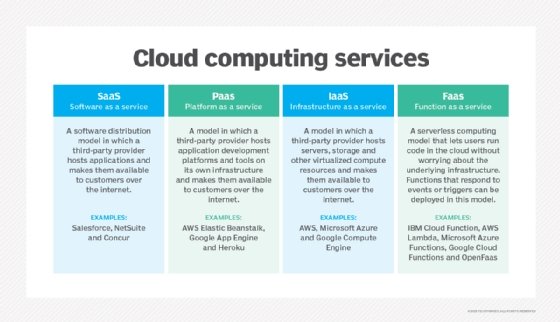Unlocking Success with LinkDaddy Cloud Services: Making The Most Of Universal Cloud Service Influence
Simplify Your Framework With Cloud Solutions
As businesses navigate the ever-evolving landscape of technology and information monitoring, the duty of cloud services in simplifying framework has actually ended up being significantly famous. The attraction of structured processes, improved efficiency, and boosted resource allocation with cloud remedies is obvious. Nevertheless, the journey towards a more cost-efficient and agile IT infrastructure involves greater than just moving to the cloud. It requires a tactical method and a deep understanding of the nuances of cloud adoption. Exactly how can businesses successfully browse this transition and really open the potential of cloud solutions for simplifying their framework?
Benefits of Cloud Provider
Cloud solutions supply a structured approach to handling IT facilities, giving businesses with scalability, flexibility, and cost-efficiency. One of the key benefits of cloud solutions is the scalability they use. Organizations can conveniently scale their sources up or down based on demand, guaranteeing they just spend for what they make use of. This versatility is particularly beneficial for companies with changing requirements or those experiencing development.
Furthermore, cloud services eliminate the demand for organizations to spend in pricey software and hardware. This cost-efficiency is a considerable advantage, especially for small to medium-sized enterprises wanting to decrease upfront costs. By utilizing cloud services, services can access top notch IT resources without the hefty cost related to standard framework setups.
Additionally, cloud solutions give organizations with the adaptability to access their information and applications from anywhere with a net link. This degree of ease of access enhances collaboration among groups, makes it possible for remote job, and increases general productivity. The flexibility provided by cloud solutions encourages companies to adjust quickly to changing market conditions and client needs.
Price Cost Savings and Scalability
Along with the functional benefits highlighted earlier, the combination of cloud solutions into a business's facilities yields considerable cost financial savings and boosted scalability. Cloud services use a pay-as-you-go model, permitting businesses to range resources up or down based on existing needs, consequently avoiding the costs related to maintaining excess capacity. This flexibility enables companies to adapt promptly to varying demands without sustaining unneeded costs.
In addition, cloud solutions get rid of the requirement for ahead of time financial investments in software and hardware, reducing funding expenditures. Overhead are likewise minimized as business no much longer need to handle and maintain physical web servers, bring about lower power consumption and IT staffing expenses. Additionally, cloud services give automatic updates and upkeep, guaranteeing that the framework stays up-to-date and secure without calling for hand-operated treatments.
Boosted Safety And Security Steps
Executing rigid safety and security actions is paramount when integrating cloud services right into a company's facilities to safeguard sensitive information and ensure compliance with sector laws. Cloud solution carriers offer enhanced protection attributes such as information security, firewall protection, and multi-factor verification to alleviate cybersecurity dangers.
In addition, routine security audits and conformity assessments help make sure and determine vulnerabilities adherence to industry criteria. Business can additionally take advantage of features like automatic safety and security updates and real-time risk surveillance offered by cloud service carriers. By focusing on safety measures and remaining aggressive in addressing potential threats, organizations can with confidence take advantage of cloud solutions while safeguarding their useful information from unauthorized gain access to or violations.
Transitioning to Cloud Facilities
To successfully incorporate cloud services into a firm's framework, a structured approach that deals with the shift towards cloud-based services is essential. Transitioning to cloud facilities involves mindful preparation and implementation to ensure a smooth migration process - linkdaddy cloud services press release.
Once the assessment is total, a migration technique ought to be created. This approach needs to lay out the timeline, sources, and responsibilities for moving each component to the cloud. It is necessary to communicate this plan plainly to all stakeholders to make certain positioning and reduce disruptions throughout the change.
During the migration monitoring, procedure and screening are crucial to recognize and attend to any type of problems quickly. Regular checkpoints need to be established to track progress and make essential modifications. Additionally, training for staff members on making use of cloud services should be given to make certain an effective transition and make best use of the advantages of the brand-new framework.
Best Practices for Cloud Adoption
Successful adoption of cloud services pivots on the critical placement of service objectives with technological abilities and organizational readiness. To make certain a smooth shift to the cloud, companies must begin by carrying out a comprehensive assessment of their present framework and determining which work are best suited for cloud migration. It is vital to include vital stakeholders from different departments in the decision-making procedure to gain buy-in and attend to any worries beforehand.
One more finest technique for cloud fostering is to prioritize safety and conformity. Organizations should meticulously evaluate the safety measures provided by cloud provider and make certain that their data is secured according to industry requirements and governing needs. Applying durable information file encryption, gain access to controls, and regular safety audits can help minimize threats related to cloud adoption.

Final Thought

As services browse the ever-evolving landscape of modern technology and data administration, the function of cloud solutions in streamlining infrastructure has come to be significantly noticeable - linkdaddy cloud services. Exactly how can companies you can try here successfully browse this transition and genuinely open the possibility of cloud solutions for simplifying their infrastructure?
Cloud services use a structured approach to managing IT framework, giving services with adaptability, cost-efficiency, and scalability. By using cloud services, companies can access high-grade IT sources without the hefty rate tag linked with typical infrastructure setups.
To guarantee a smooth shift to the cloud, organizations need to start by carrying out a detailed analysis of their present facilities and determining which workloads are Homepage best matched for cloud movement.